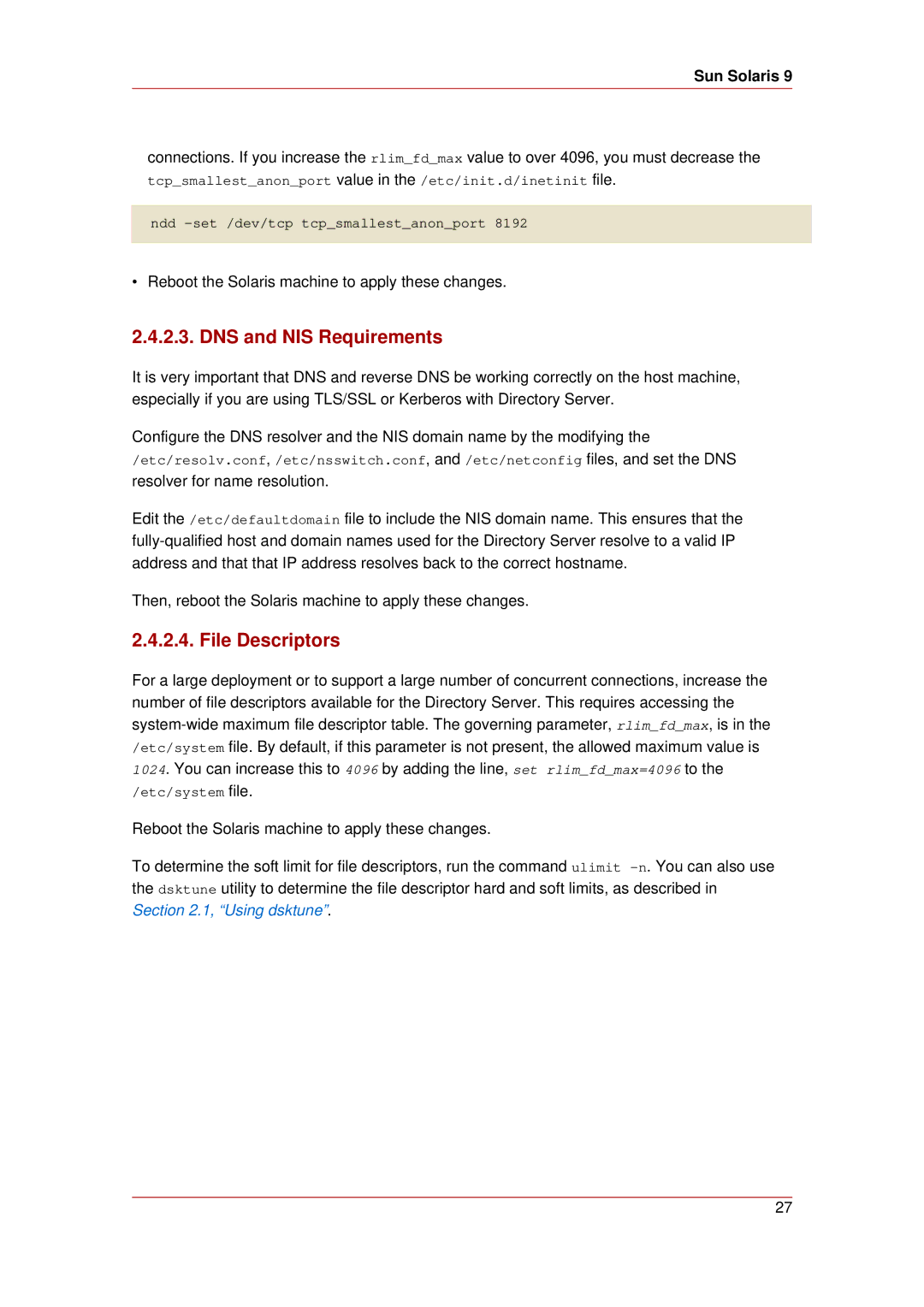
Sun Solaris 9
connections. If you increase the rlim_fd_max value to over 4096, you must decrease the tcp_smallest_anon_port value in the /etc/init.d/inetinit file.
ndd
• Reboot the Solaris machine to apply these changes.
2.4.2.3. DNS and NIS Requirements
It is very important that DNS and reverse DNS be working correctly on the host machine, especially if you are using TLS/SSL or Kerberos with Directory Server.
Configure the DNS resolver and the NIS domain name by the modifying the /etc/resolv.conf, /etc/nsswitch.conf, and /etc/netconfig files, and set the DNS resolver for name resolution.
Edit the /etc/defaultdomain file to include the NIS domain name. This ensures that the
Then, reboot the Solaris machine to apply these changes.
2.4.2.4. File Descriptors
For a large deployment or to support a large number of concurrent connections, increase the number of file descriptors available for the Directory Server. This requires accessing the
Reboot the Solaris machine to apply these changes.
To determine the soft limit for file descriptors, run the command ulimit
27
